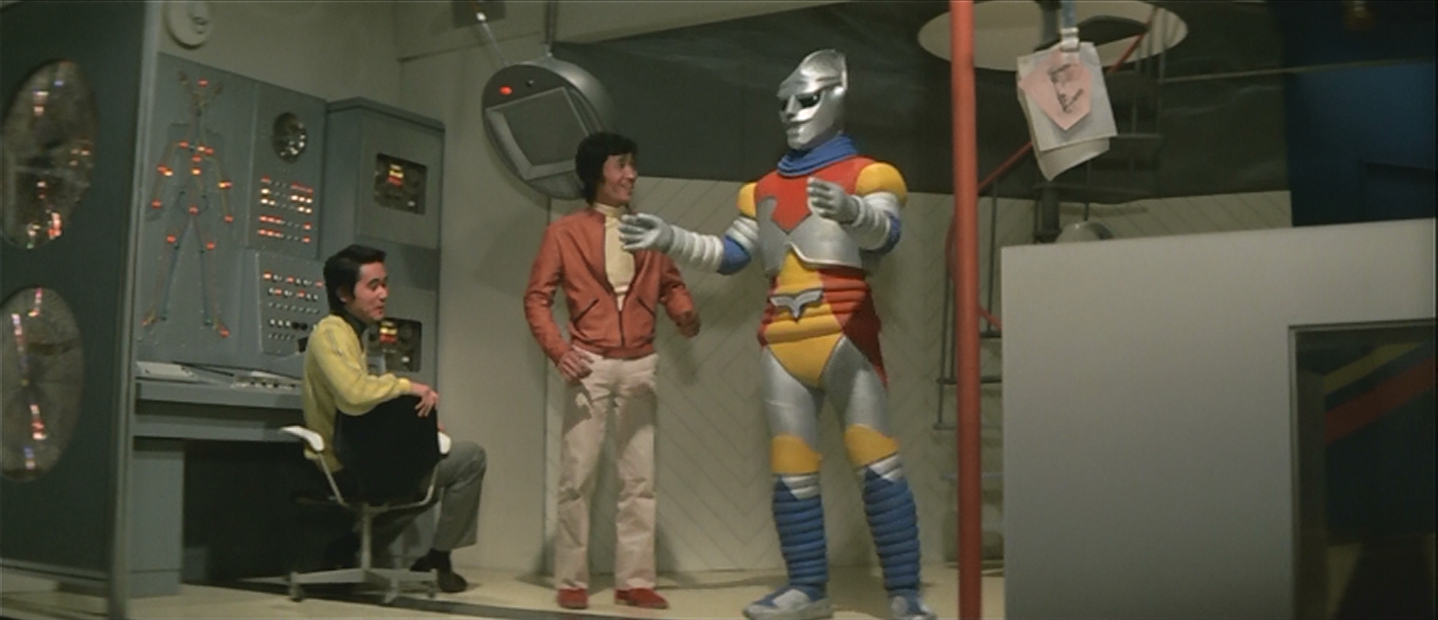
Toho had also realized that Godzilla films were more profitable as sellers of merchandise (George Lucas would discover hos astonishingly lucrative merchandising could be four years later) than they were as films. Films were more intended to keep the franchise alive and in the public eye. But Godzilla vs Megalon brought in less than a million viewers, a low point in the Godzilla history. Further, Ultraman and his clones were taking a lot of the audience from the Godzilla franchise, since they appeared every week on television for free. Why go to the movies to see what you could watch on television? Knowing this, the budget of the film was low, using a fair amount of recycled footage from previous film entries, and is pretty light on Godzilla. It's also the first time in a decade that a single kaiju film was released.
The plot? The Seatopians angry underworlders/sea people who are irritated because the upper world because they keep dropping nukes near them. So they steal the most advanced robot on the planet to guide their angry but stupid god, Megalon.
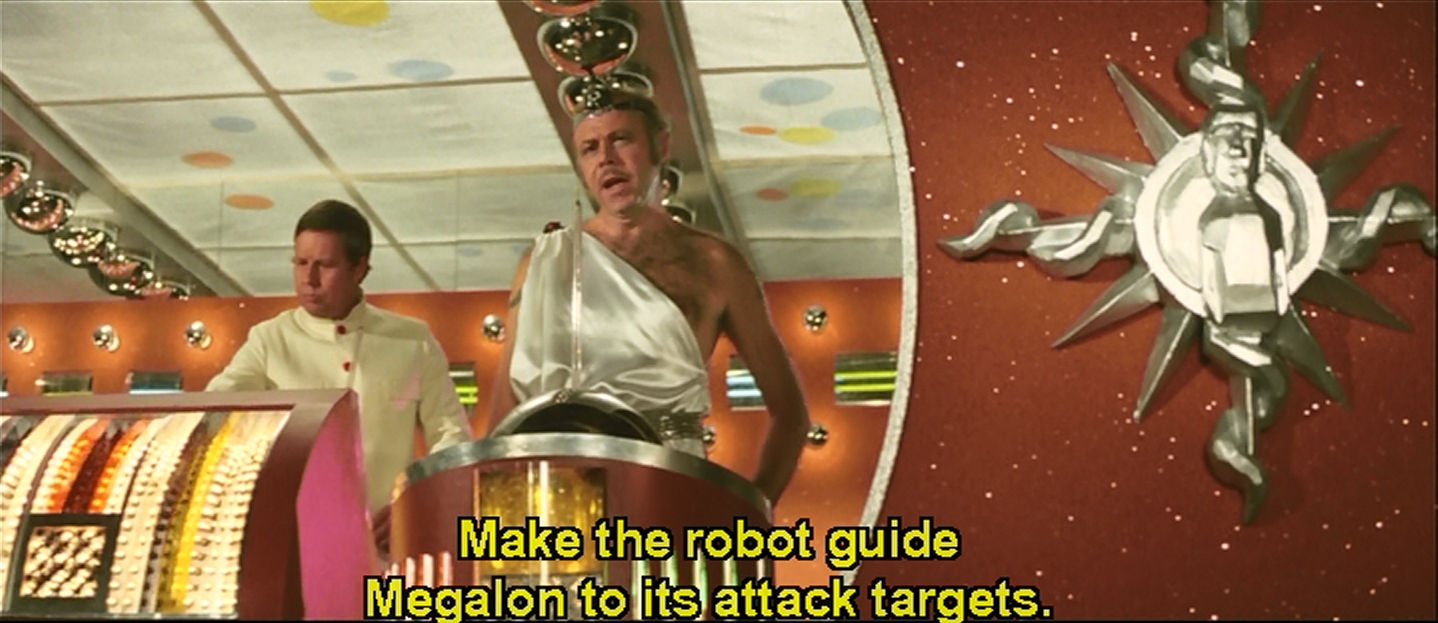
Megalon is just as weird as Gigan. He's a gigantic bug with some sort of energy-emitting antenna on his head, grenades that come out of his mouth, and drills for hands. He can fly. He doesn't actually flap the wings that get deployed, we as the audience just understand that he's got wings, so he flies. His drill-hands also allow him to tunnel rapidly. Basically, he's a gigantic design mess.
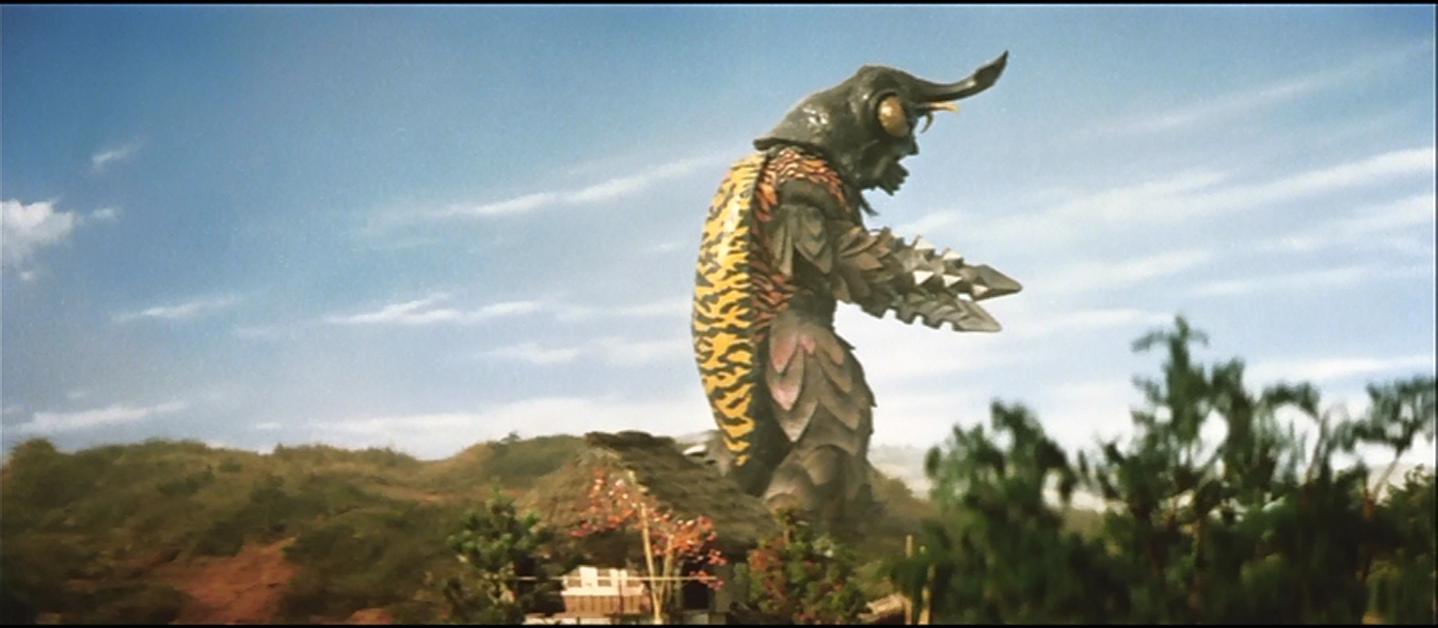
Jet Jaguar is a robot with a bigass grill grin, who looks like he was colored with crayon. Despite being programed with punch-cards he turns out to be self-programing. He can fly. Halfway through the film he enlarges himself to combat Megelon on equal footing. Ultraman does this using the Beta Capsule. Jet Jaguar does it because it's a trope, and his creators shrug and say his determination must have made him grow that big. This is completely indicative of the lazy writing for this installment of the franchise.
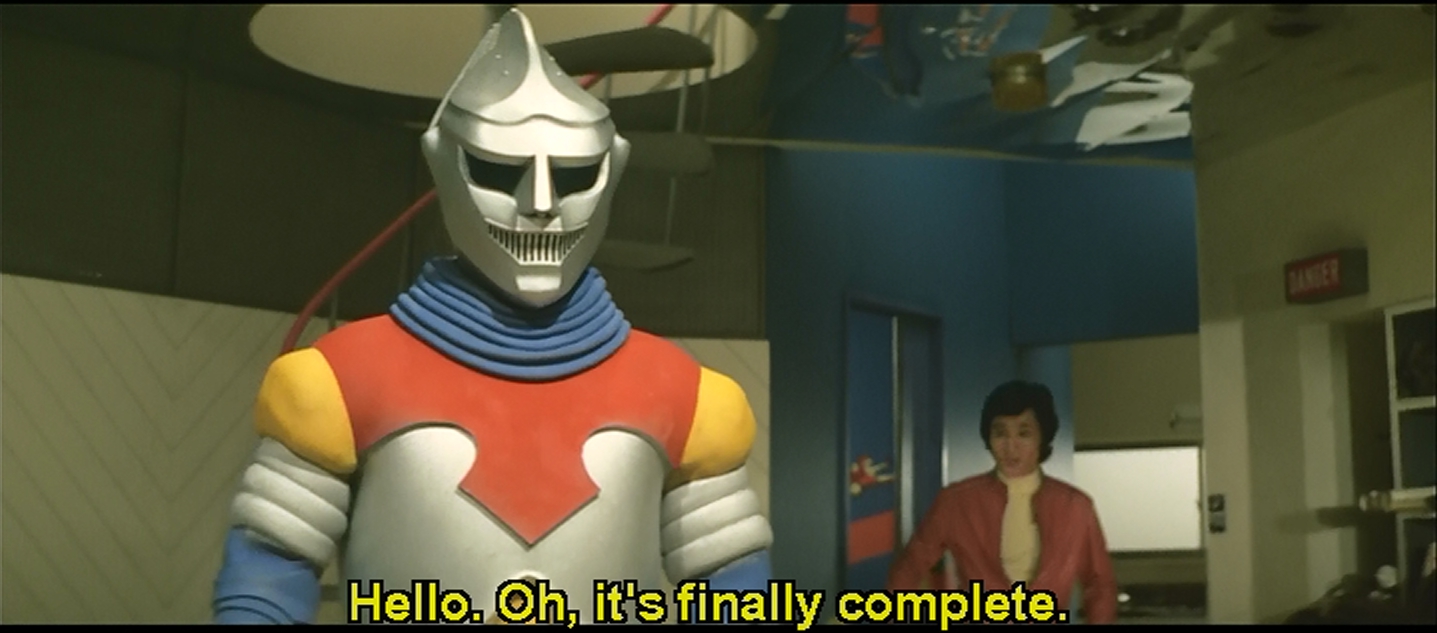
And boy, is it the seventies. This is the only Godzilla film with a Simon and Garfunkle reference. The Anglo dictator of Seatopia proudly shows off his hairy chest. Seatopia features liturgical dance of women in clear raincoats, go-go boots, billowy see-through hats, and bikinis underneath.
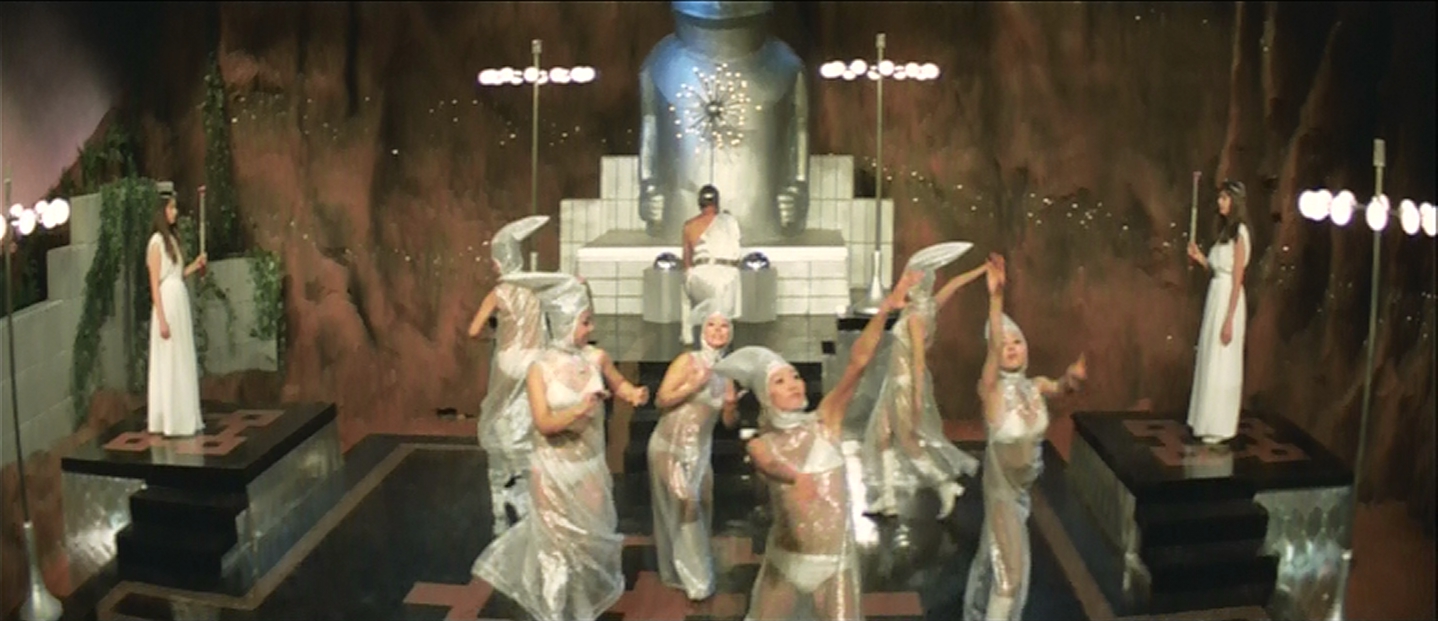
Probably the height of the production is the destruction of the dam. It tends to be mentioned in most reviews of the film, and it's a good, if all too brief sequence.
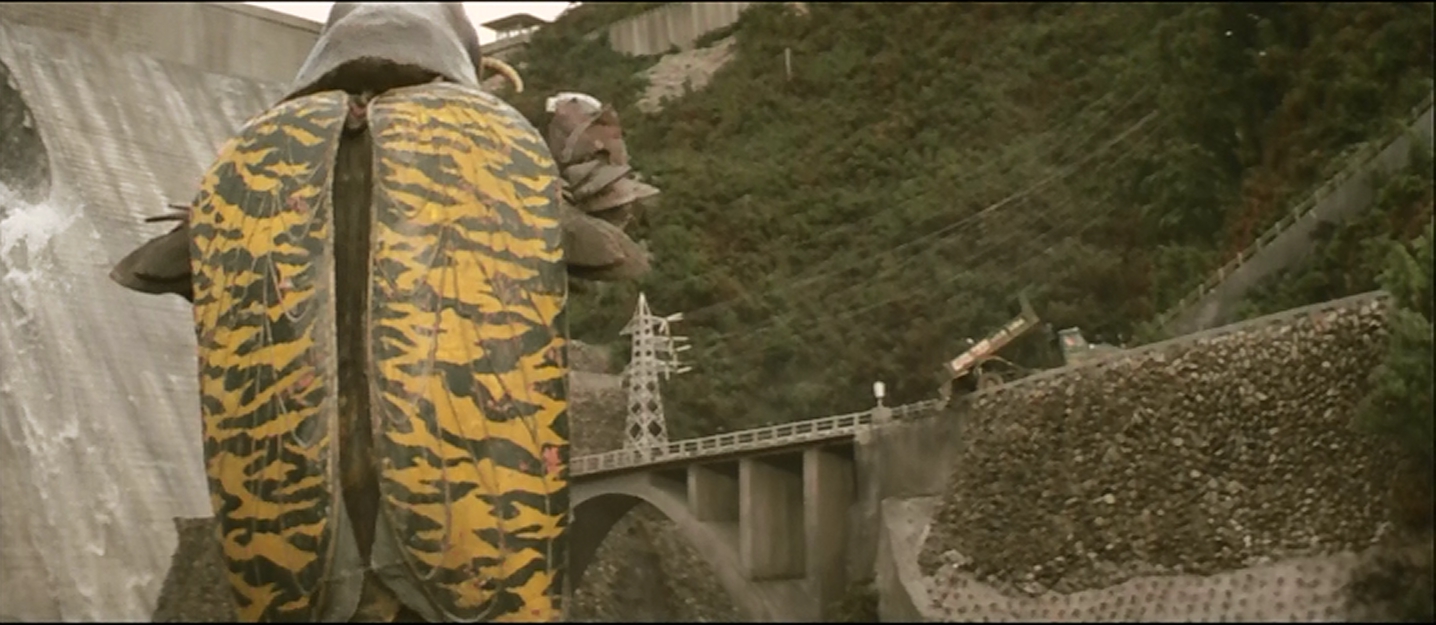
Nowhere is the recycled footage more apparent than in the air assault on Megalon. Not only does the sequence use footage from previous films (including Gigan's metallic claw swatting fighters), it does so multiple times, stretching the sequence out by showing us the same explosions two or three times. The same is true of his city-based rampage, which is drawn mostly from Invasion of Astro-Monster.
Our first glimpse of Godzilla, aside from a momentary appearance in the opening sequence, is forty-eight minutes into the eighy-three minute film. That's half the film in which Godzilla, whose name is the first on the title, doesn't appear. After a reversed shot from of him leaping into the ocean, stolen from Ebirah, Horror of the Deep, he then spends twenty-one more minutes minutes swimming and then walking to the fight.
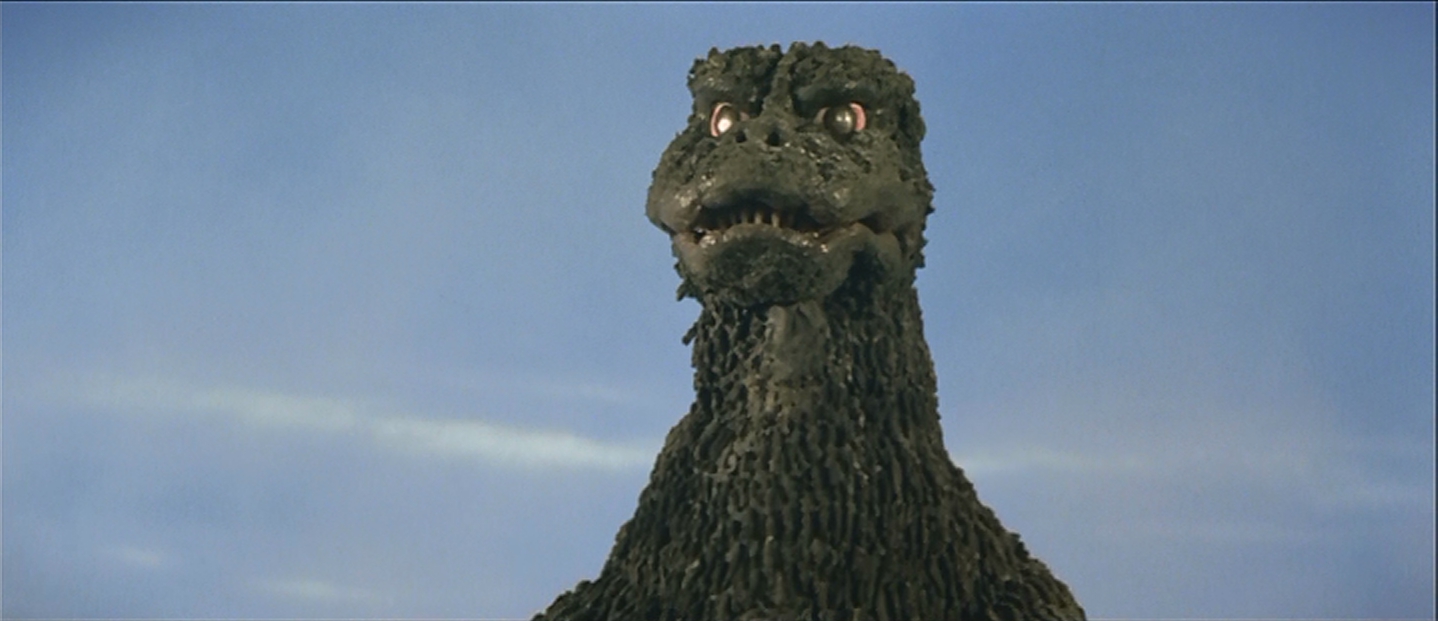
The Seatopians, it turns out, have contacts amont the Hunter Nebula-M people, and ask if they can borrow their giant monster, as if it were a cup of sugar. Jet Jaguar is able to hold his own against Megalon, but when Gigan appears, he's overmatched. Luckily, somewhat like the reinforcements arriving at Gettysburg, Godzilla appears just as Jet Jaguar's getting his ass kicked. And, alone, he trashes both Gigan and Megalon.
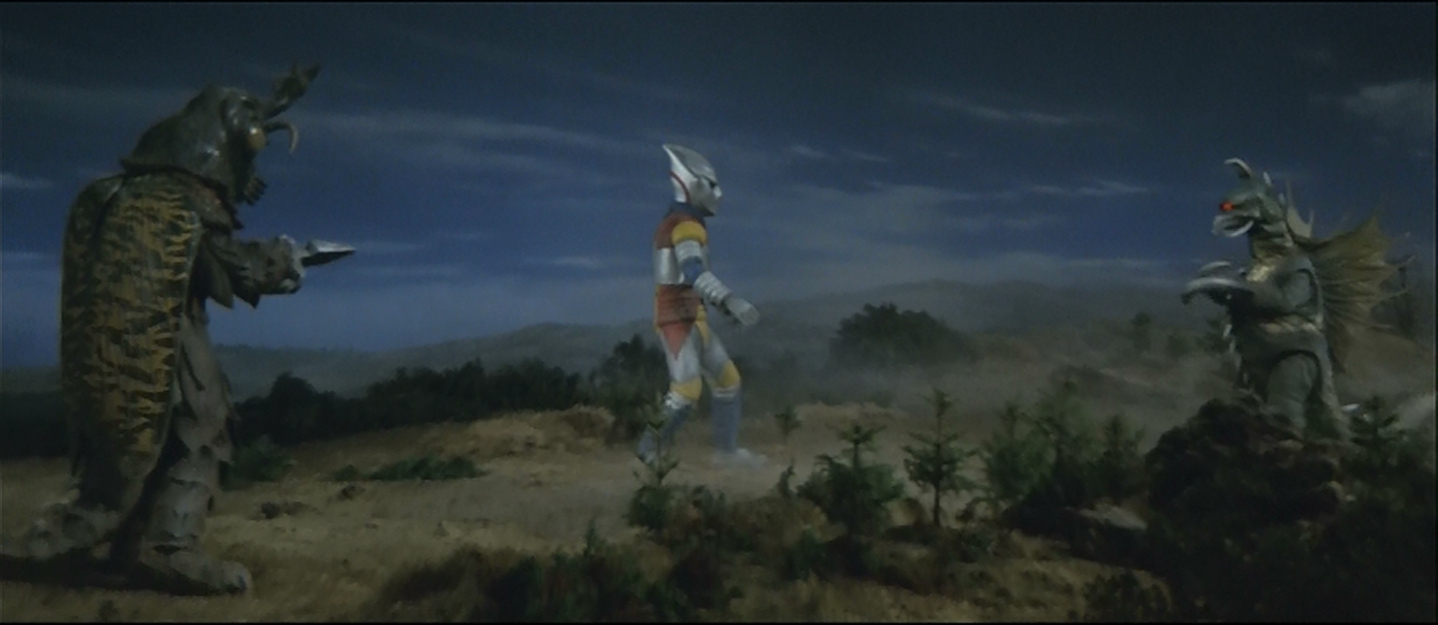
But they villainous pair get a second wind, and it's on again. Godzilla hammers Megalon, as Jet Jaguar gets beaten on by Gigan. Godzilla and the robot gang up on the cyborg, and then this famous bit of silliness happens:
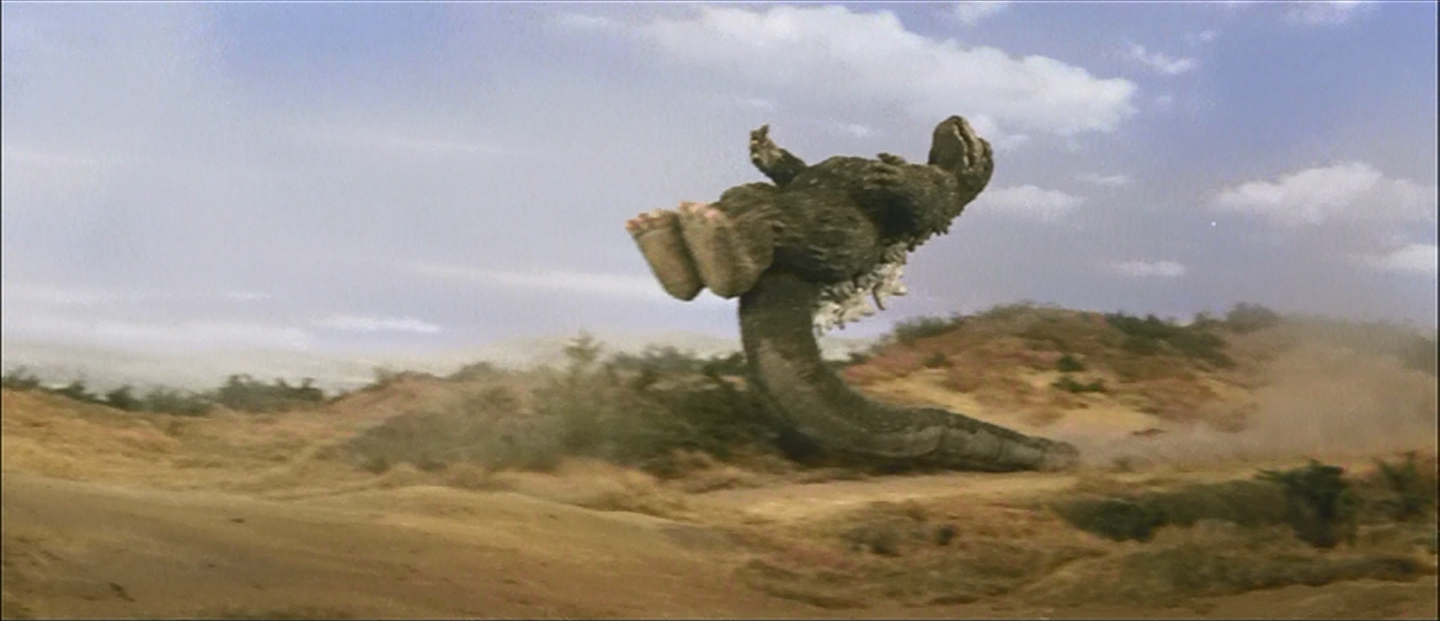
Twice. It's so silly that it was featured on MST3K's opening for a season and a half. But this isn't the climactic battle's worst attribute. It's that there is no progression to the fight. There are so many reversals that it has no meaning. Someone's winning, then they're losing, and then they're winning, then losing. It's all padding. In fact, the entire film feels like padding. The greatest failing of Godzilla vs Megalon is that the title character isn't actually involved in the plot. And it's easy to see that he got dropped into the film almost as an afterthought.
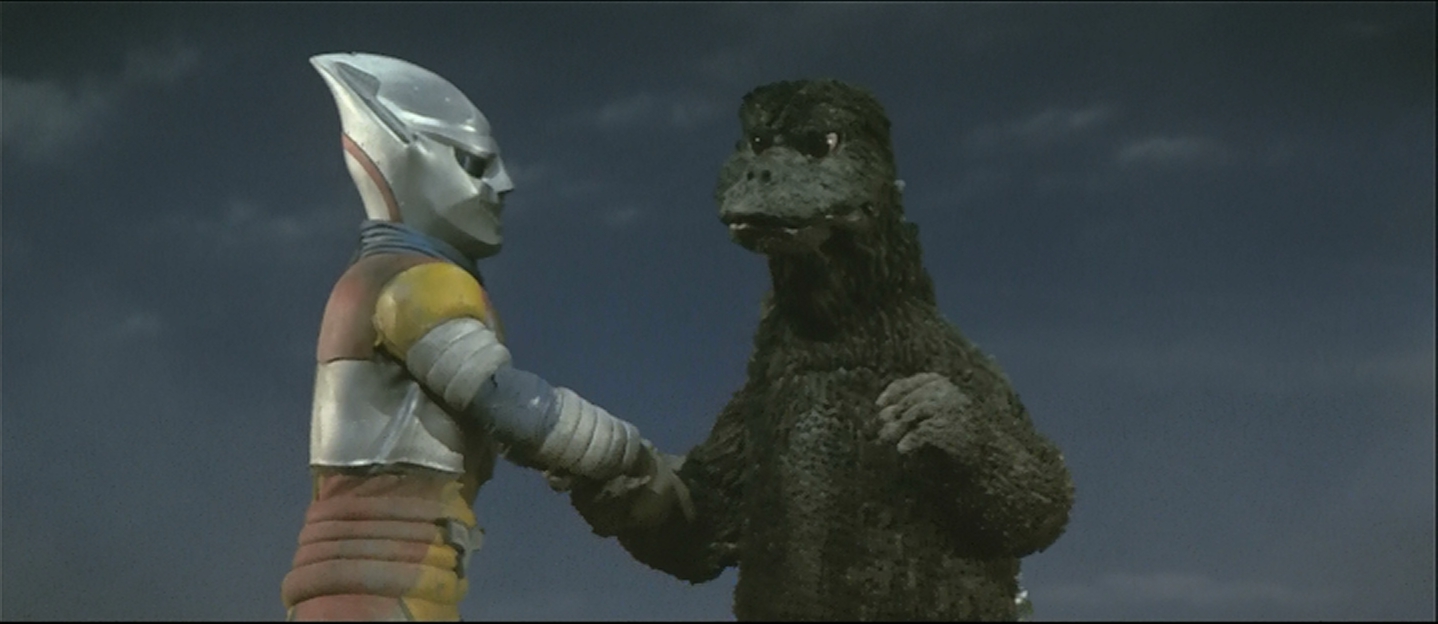
This is the first time Godzilla was not played by Nakajima. Shinji Takagi takes the role here, for the only time, although future Godzilla suit actor Kenpachiro Satsuma is agin the Gigan suit.
The real tragedy here is that for decades, Godzilla vs Megalon was what the American public throught a Godzilla film was. With poor access to home film until the middle eighties, Godzilla vs Megalon managed to fall into the public domain somehow, and therefore became a cheap TV staple.
Next up, we meet the first version of Godzilla's most dangerous foe.
No comments:
Post a Comment